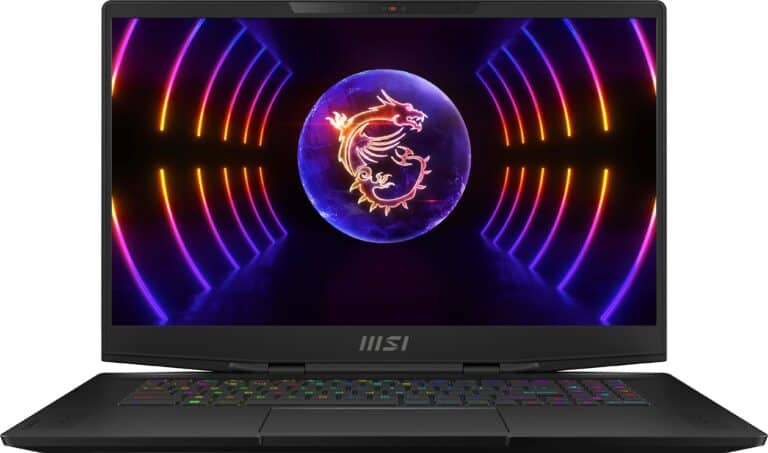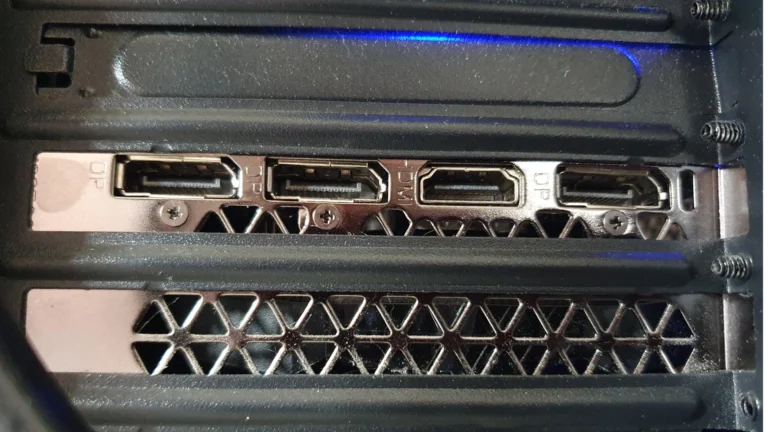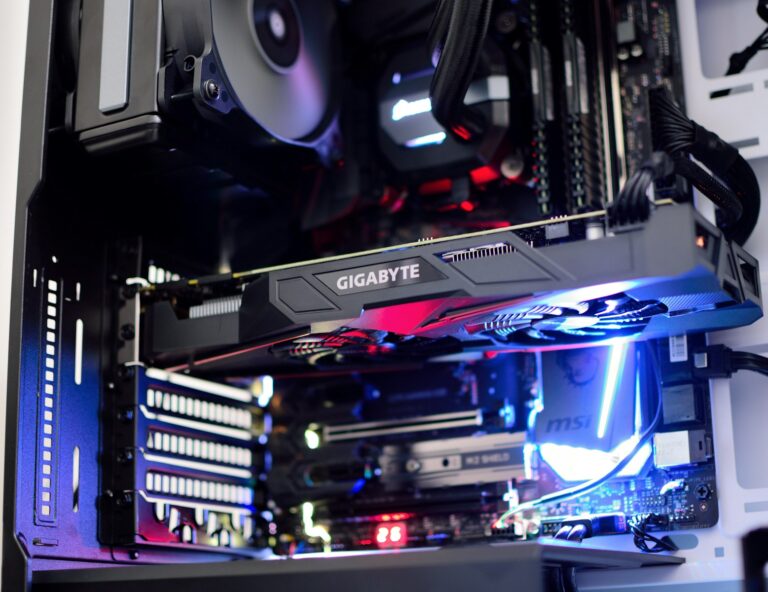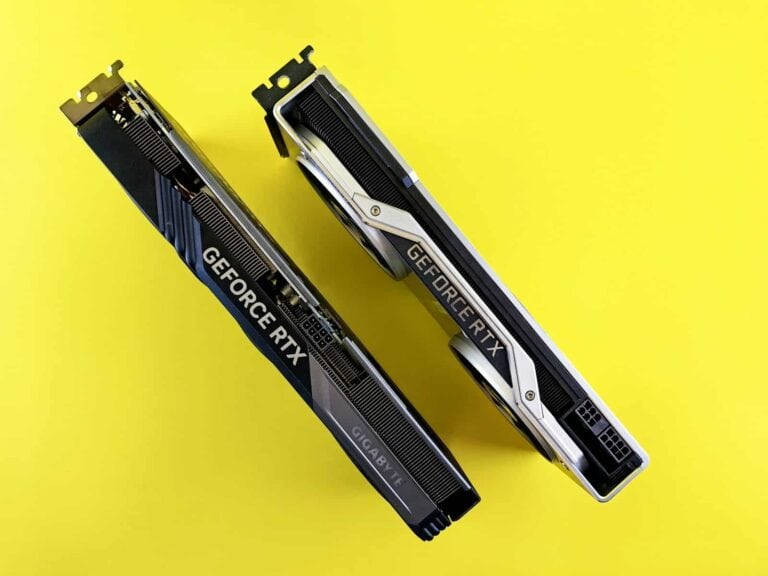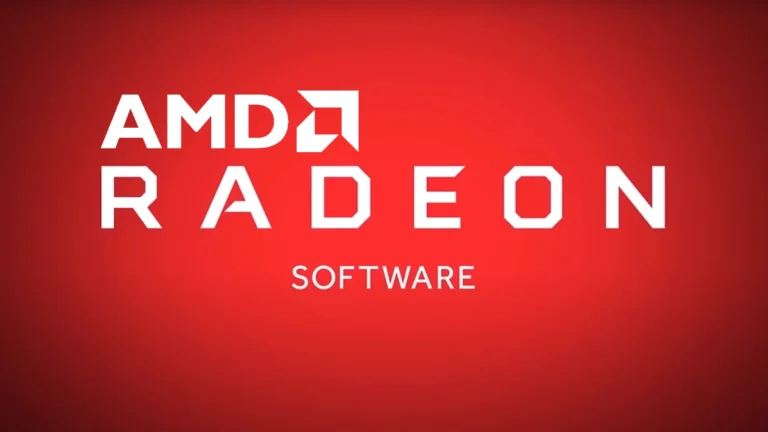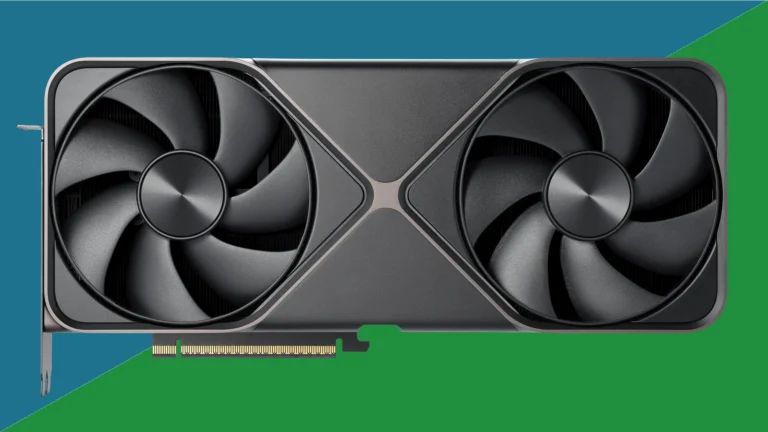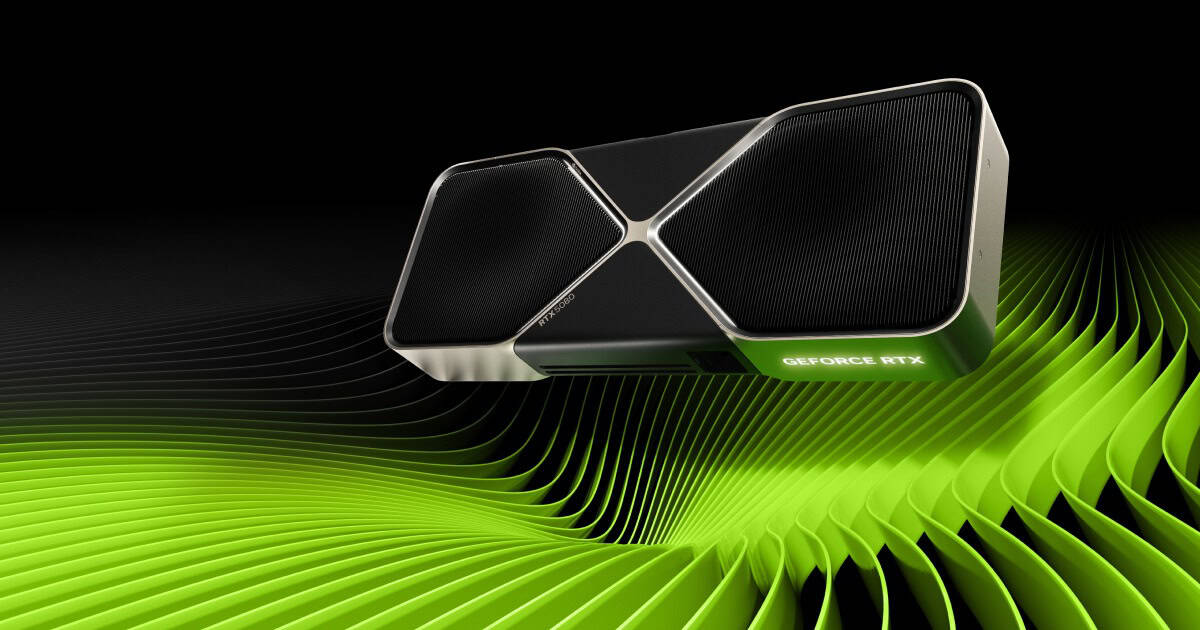
Nvidia’s upcoming GeForce RTX 5080 graphics card promises to redefine high-end gaming performance. This new GPU, built on the advanced Blackwell architecture, aims to deliver significant improvements over its predecessor. The RTX 5080 is expected to offer superior 4K gaming capabilities and enhanced ray tracing performance, potentially outperforming even the current top-tier RTX 4090 in some scenarios.
Gamers and enthusiasts eagerly anticipate the RTX 5080’s release, rumored to be in late January. The card is set to feature DLSS 4 technology, which brings multi-frame generation and improved ray reconstruction. These advancements, coupled with the new GPU architecture, could result in a substantial leap in gaming experiences.
While exact specifications remain unconfirmed, early leaks suggest the RTX 5080 will utilize faster GDDR7 memory. This upgrade, combined with an increased number of CUDA cores, positions the RTX 5080 as a formidable option for both gaming and content creation tasks. Pricing details are yet to be announced, but the card is expected to occupy a premium segment in the GPU market.
Unleashing the Power of the RTX 5080: A Deep Dive into NVidia’s Gaming Beast
Core Counts and Clock Speeds
The RTX 5080 boasts an impressive 10,752 CUDA cores. These cores are the heart of the GPU, responsible for processing the complex calculations required for gaming and other graphics-intensive tasks. The 5080’s core count places it comfortably above the RTX 5070 Ti (8,960 cores) and significantly ahead of the RTX 5070 (6,144 cores).
With a boost clock speed of 2.62 GHz, the 5080 edges out the 5070 (2.51 GHz) and 5070 Ti (2.45 GHz). This higher clock speed contributes to the 5080’s ability to deliver smooth frame rates, even in demanding games at high resolutions.
Memory Capacity and Bandwidth
The RTX 5080 comes equipped with 16 GB of GDDR7 memory. This is the same amount found in the 5070 Ti, but more than the 12 GB in the 5070. This ample memory capacity ensures that the 5080 can handle the texture-heavy demands of modern games without any bottlenecks.
Furthermore, the 5080’s 256-bit memory interface provides a wider pathway for data to travel between the GPU and memory. This translates to higher memory bandwidth, which is crucial for smooth performance, especially at higher resolutions and refresh rates.
Ray Tracing and DLSS
Like its siblings in the RTX 50 series, the 5080 supports ray tracing and DLSS. Ray tracing simulates the behavior of light in real-time, creating more realistic reflections, shadows, and lighting effects. DLSS (Deep Learning Super Sampling) uses AI to upscale the resolution of games, providing a performance boost without sacrificing image quality.
The 5080’s powerful ray tracing cores and dedicated AI processors allow it to handle these demanding technologies with ease, delivering stunning visuals and smooth gameplay.
Power Consumption and Thermals
The RTX 5080 has a Total Graphics Power (TGP) of 360W. This is higher than the 5070 Ti (300W) and 5070 (250W), but lower than the top-of-the-line 5090 (575W). Gamers will need a robust power supply to accommodate the 5080’s power demands.
NVidia’s Founders Edition of the 5080 features a dual-slot cooler with a vapor chamber and axial fans. This cooling solution is designed to keep the GPU running at optimal temperatures, even under heavy load.
Comparison Table
| Feature | GeForce RTX 5080 |
|---|---|
| CUDA Cores | 10752 |
| Boost Clock (GHz) | 2.62 |
| Memory | 16 GB GDDR7 |
| Memory Interface | 256-bit |
| Ray Tracing Cores | 4th Gen, 171 TFLOPS |
| Tensor Cores | 5th Gen, 1801 AI TOPS |
| TGP (W) | 360 |
Is the RTX 5080 Worth It?
The RTX 5080 is a high-performance graphics card that can handle the most demanding games at high resolutions and refresh rates. Its combination of CUDA cores, clock speeds, memory capacity, and ray tracing capabilities make it a top contender for gamers seeking the best possible experience.
However, the 5080’s higher price and power consumption may be a concern for some users. Gamers on a tighter budget may want to consider the RTX 5070 Ti, which offers excellent performance at a lower cost.
Ultimately, the decision of whether or not the RTX 5080 is “worth it” depends on your individual needs and priorities. If you’re looking for the best possible gaming performance and are willing to pay a premium, the 5080 is a compelling option.
Key Takeaways
- The RTX 5080 is built on Nvidia’s new Blackwell architecture, promising significant performance gains
- DLSS 4 technology and faster GDDR7 memory are key features of the upcoming GPU
- The card is positioned as a high-end option for 4K gaming and content creation
Unveiling the Nvidia GeForce RTX 5080
NVidia’s latest release, the RTX 5080, sets a new standard for gaming graphics cards. The 5080 offers impressive specifications and advanced features for a top-notch gaming experience. It has many CUDA cores, high clock speeds, and plenty of memory, making it able to run demanding games at high resolutions and refresh rates.
The 5080 also includes NVidia’s latest technologies, such as ray tracing and DLSS, for stunning visuals and improved performance. Whether you are a competitive gamer or a casual player wanting to enjoy immersive experiences, the RTX 5080 has the power and features to enhance your gaming.
Nvidia’s latest high-end graphics card brings significant improvements in performance and features. The RTX 5080 introduces new technologies and enhanced capabilities for gaming and content creation.
An Overview of Specs and Features
The RTX 5080 boasts impressive specifications:
- Cuda Cores: 14,336
- Base Clock: 2.31 GHz
- Boost Clock: 2.69 GHz
- VRAM: 16 GB GDDR7
- Memory Interface: 256-bit
- TDP: 320W
This card supports DLSS 4, offering improved image quality and performance. Ray tracing capabilities have been enhanced, providing more realistic lighting and reflections in games. The RTX 5080 also features improved tensor cores for AI-powered tasks.
Comparative Analysis: RTX 5080 vs. RTX 5090 and RTX 5070
The RTX 5080 sits between the 5090 and 5070 in Nvidia’s lineup:
| Feature | RTX 5090 | RTX 5080 | RTX 5070 |
|---|---|---|---|
| CUDA Cores | 18,432 | 14,336 | 10,240 |
| VRAM | 24 GB | 16 GB | 12 GB |
| Price | $1,999 | $999 | $549 |
The 5080 offers a balance of performance and price. It outperforms the 5070 by a significant margin but costs less than the top-tier 5090. For most high-end gaming setups, the 5080 provides excellent value.
Blackwell Architecture Explained
The RTX 5080 uses Nvidia’s new Blackwell architecture. This design brings several improvements:
- Enhanced ray tracing cores
- More efficient tensor cores
- Improved power efficiency
- Better performance per watt
Blackwell builds on the strengths of previous architectures while addressing their limitations. It enables faster framerates in games and improved AI processing for tasks like DLSS.
Memory Interface and GDDR7 VRAM
The RTX 5080 features 16 GB of GDDR7 VRAM on a 256-bit memory interface. GDDR7 offers higher bandwidth and lower power consumption compared to GDDR6X. This new memory technology allows for faster data transfer between the GPU and VRAM.
The 256-bit interface may seem narrower than some previous high-end cards. However, the increased efficiency of GDDR7 compensates for this, providing ample memory bandwidth for 4K gaming and content creation tasks.
Performance Benchmarks and Gaming Capabilities
The RTX 5080 showcases impressive performance across various gaming scenarios and workloads. It excels in high-resolution gaming, ray tracing, and AI-powered tasks.
4K and 1440p Gaming Experience
The RTX 5080 delivers exceptional performance in 4K gaming. It handles demanding titles at 60+ fps with high settings. This card shines even brighter at 1440p, pushing frame rates well above 100 fps in most games.
Popular esports titles run at 240+ fps at 1440p, ideal for competitive gamers with high refresh rate monitors. The 16GB GDDR7 memory provides ample bandwidth for texture-heavy games at 4K.
Benchmarks show the RTX 5080 outperforming its predecessor by 30-40% in 4K gaming. It even rivals the previous-gen flagship RTX 4090 in some scenarios.
Ray Tracing and Rasterization
Ray tracing performance sees a significant boost with the RTX 5080. It handles ray-traced lighting, shadows, and reflections with less impact on frame rates compared to previous generations.
Games like Cyberpunk 2077 and Metro Exodus Enhanced Edition run smoothly at 4K with ray tracing enabled. DLSS 3.5 further improves performance, allowing for 4K gaming with ray tracing at 60+ fps in many titles.
In rasterization, the RTX 5080 shows a 25-35% improvement over the RTX 4080. This translates to smoother gameplay and higher frame rates across a wide range of games.
AI Workloads and Content Creation
The RTX 5080 excels in AI-powered tasks and content creation. Its improved Tensor cores accelerate AI workloads, benefiting both gaming and professional applications.
Video editors and 3D artists will appreciate the card’s performance in rendering tasks. It cuts down render times significantly compared to previous generations.
AI-enhanced features like DLSS 3.5 and NVIDIA Broadcast see improvements. The RTX 5080 handles these tasks with ease, providing smoother workflows for content creators and streamers.
Power, Efficiency, and System Requirements
The RTX 5080 brings significant advancements in power management and efficiency. It balances high performance with improved energy usage, requiring careful consideration of system requirements.
Understanding TGP and TDP
The RTX 5080’s Total Graphics Power (TGP) is expected to be around 400 watts. This represents the maximum power consumption of the graphics card during heavy workloads. The Thermal Design Power (TDP) is slightly lower, indicating the average power draw under typical gaming scenarios.
TGP and TDP are crucial for determining cooling needs and power supply requirements. The RTX 5080’s increased power draw compared to its predecessor necessitates robust cooling solutions. Users should ensure their cases have adequate airflow to prevent thermal throttling.
Recommended Power Supply and Cooling Solutions
A high-quality 850W power supply is recommended for systems using the RTX 5080. This provides headroom for power spikes and system stability. The card uses a 12V 2×6 power connector, capable of delivering up to 600 watts.
Effective cooling is essential. Options include:
- Air cooling with large heatsinks and multiple fans
- Liquid cooling for maximum thermal performance
- Hybrid solutions combining air and liquid cooling
Custom AIB partner cards may offer enhanced cooling designs for better thermal management.
Energy Efficiency and Power Draw Analysis
Despite its high TGP, the RTX 5080 shows improved energy efficiency over previous generations. Performance-per-watt metrics indicate significant gains, allowing for better performance without proportional increases in power consumption.
Power draw varies based on workload:
| Scenario | Estimated Power Draw |
|---|---|
| Idle | 15-20W |
| Gaming | 300-350W |
| Peak | 400W |
The card’s ability to dynamically adjust power usage helps optimize efficiency across different tasks. This balance of power and performance positions the RTX 5080 as a compelling option for high-end gaming setups.
Market Positioning and Pricing Strategy
Nvidia’s RTX 5080 enters a competitive high-end GPU market. Its pricing and performance will shape its position among enthusiasts and professionals.
High-End GPU Market Landscape
The high-end GPU market is dynamic. Nvidia dominates with its RTX series. AMD provides competition with its high-performance offerings. Intel has entered the market with its Arc GPUs.
Nvidia’s RTX 4090 and 4080 currently lead in performance. The RTX 4080 Super, announced at CES 2025, raised the bar further. These cards target enthusiasts and professionals who demand top-tier graphics power.
The market sees regular product cycles. New releases often push previous generations to lower price points. This creates opportunities for budget-conscious buyers seeking high performance.
RTX 5080 Pricing in the Context of RTX 50 Series
The RTX 5080’s price is crucial for its market position. Rumors suggest a range between $800 and $1000. This places it below the expected RTX 5090 price of over $1500.
A comparison of rumored RTX 50 series pricing:
| GPU Model | Rumored Price Range |
|---|---|
| RTX 5090 | $1500 – $2600 |
| RTX 5080 | $800 – $1000 |
| RTX 5070 Ti | $600 – $800 |
| RTX 5070 | $500 – $700 |
These prices indicate Nvidia’s strategy to segment the market. The RTX 5080 aims to balance high performance with more accessible pricing compared to the flagship 5090.
Forecast for the High-End GPU Market Post-Release
The RTX 5080’s release will likely shake up the market. It may force price adjustments for current-gen cards like the RTX 4080 and 4080 Super.
Competitor responses are expected. AMD might adjust prices or release new models to counter Nvidia’s offerings. Intel could accelerate its high-end GPU development to stay competitive.
The high-end GPU market may see increased demand. Factors include:
- Growing interest in AI and machine learning
- Rise of 4K and high-refresh-rate gaming
- Increased adoption of ray tracing in games
These trends could support higher prices for top-tier GPUs. However, economic factors and chip availability will influence final market prices and availability.
Frequently Asked Questions
The RTX 5080 brings significant advancements in gaming performance and technology. Gamers are eager to learn about its improvements, release date, and pricing details.
What improvements can gamers anticipate with the release of the RTX 5080 over previous models?
The RTX 5080 is expected to offer substantial performance gains over its predecessors. It will likely feature more CUDA cores and faster GDDR7 memory, resulting in improved frame rates and smoother gameplay at high resolutions.
The new Blackwell architecture should bring enhancements in ray tracing capabilities. This could lead to more realistic lighting and shadows in games.
How does the RTX 5080’s performance compare to the RTX 4090?
Early rumors suggest the RTX 5080 might outperform the RTX 4090 in ray tracing tasks. This would be a significant leap forward for a xx80 series card.
The combination of increased CUDA cores and faster memory could make the RTX 5080 a strong competitor to the current flagship model in overall gaming performance.
What is the expected pricing for the new RTX 5080, and how does it compare to its predecessors?
Pricing details for the RTX 5080 have not been officially announced. It’s likely to be positioned as a high-end card with a price tag reflecting its performance capabilities.
Consumers can expect the RTX 5080 to be more affordable than the top-tier RTX 5090 while offering significant improvements over the previous generation’s RTX 4080.
When is the RTX 5080 scheduled to be released and become available for purchase?
The RTX 5080 is rumored to launch in early 2025. NVIDIA typically releases its new GPU generations in the fall, but exact dates can vary.
Availability may be limited at launch due to high demand. Interested buyers should stay tuned for official announcements from NVIDIA regarding release dates and pre-order information.
Are there any significant rumors or confirmed features of the RTX 5080 that gamers should be aware of?
Leaked images of an MSI Gaming Trio RTX 5080 model have surfaced, confirming 16GB of GDDR7 VRAM. This represents an upgrade in memory technology from the previous generation.
The card is expected to use NVIDIA’s new Blackwell GPU architecture. This should bring improvements in energy efficiency and overall performance.
For high-resolution and demanding applications, is the RTX 5080 considered an optimal choice?
The RTX 5080 is shaping up to be an excellent option for 4K gaming and demanding content creation tasks. Its increased CUDA core count and faster memory should handle high-resolution workloads with ease.
For users who need top-tier performance but find the RTX 5090 too expensive, the RTX 5080 could offer an attractive balance of power and price.

